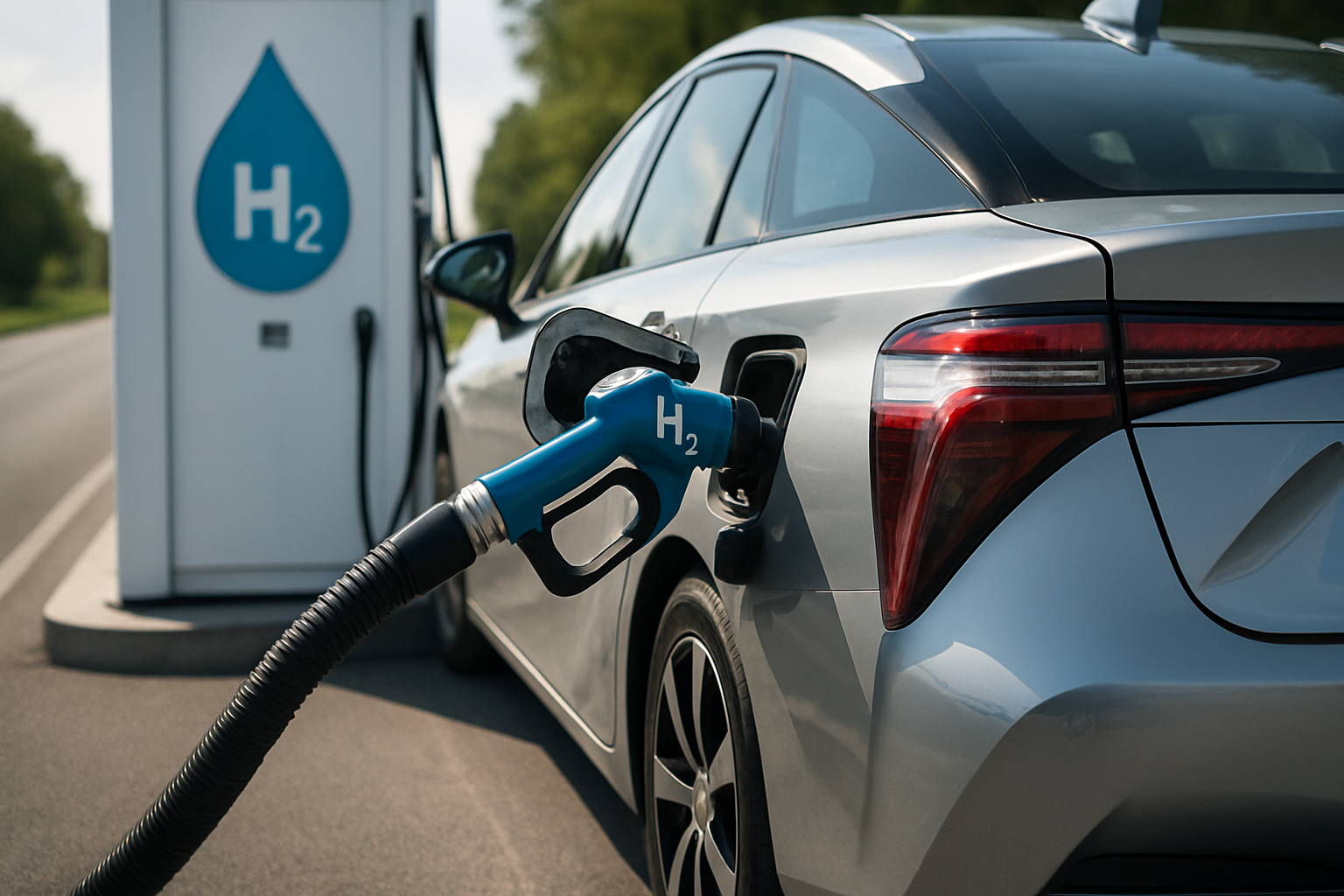Hydrogen Fuel Cell Vehicles: The Future of Zero-Emission Mobility
As the automotive industry races towards a cleaner future, hydrogen fuel cell vehicles (FCVs) are emerging as a promising alternative to traditional combustion engines. This groundbreaking technology offers the potential for truly zero-emission transportation without the range limitations often associated with battery electric vehicles. In this article, we'll explore the fascinating world of hydrogen fuel cell vehicles, their inner workings, and their potential to revolutionize the way we drive.

The Hydrogen Fuel Cell: A Miniature Power Plant on Wheels
At the heart of every fuel cell vehicle lies a remarkable piece of engineering: the hydrogen fuel cell stack. This compact device acts as a miniature power plant, continuously generating electricity to power the vehicle’s electric motors. Unlike a battery, which stores electrical energy, a fuel cell creates electricity on demand through a chemical reaction.
The process begins with hydrogen gas stored in high-pressure tanks within the vehicle. This hydrogen is fed into the fuel cell stack, where it encounters a catalyst-coated membrane. On the other side of this membrane, oxygen from the surrounding air is introduced. The catalyst helps split the hydrogen molecules into protons and electrons. While the protons pass through the membrane, the electrons are forced to travel around it, creating an electric current that powers the vehicle’s motors.
Filling Up: The Hydrogen Refueling Experience
One of the most significant advantages of hydrogen fuel cell vehicles is their ability to refuel quickly, much like a conventional gasoline-powered car. At a hydrogen refueling station, pressurized hydrogen gas is pumped into the vehicle’s storage tanks in a process that typically takes less than five minutes. This rapid refueling time addresses one of the main concerns associated with battery electric vehicles – lengthy charging times.
However, the infrastructure for hydrogen refueling is still in its early stages. While countries like Japan and Germany have made significant investments in hydrogen stations, many regions lack adequate refueling networks. This chicken-and-egg problem – needing both vehicles and infrastructure to support each other – remains one of the primary challenges facing widespread FCV adoption.
Performance and Range: Competing with Conventional Cars
Hydrogen fuel cell vehicles offer performance characteristics that can rival or even surpass those of traditional internal combustion engine cars. The instant torque provided by electric motors ensures quick acceleration, while the lack of a heavy battery pack (compared to battery electric vehicles) can contribute to nimble handling.
Perhaps most importantly, FCVs offer ranges comparable to conventional gasoline-powered vehicles. Many current hydrogen fuel cell models can travel 300-400 miles on a single tank of hydrogen, with some pushing beyond the 400-mile mark. This extended range, combined with quick refueling times, makes FCVs an attractive option for drivers who frequently travel long distances or those who don’t have access to overnight charging for battery electric vehicles.
Environmental Impact: Beyond Zero Tailpipe Emissions
While hydrogen fuel cell vehicles produce zero tailpipe emissions – with water vapor being their only byproduct – it’s essential to consider the entire lifecycle of hydrogen production and distribution when assessing their environmental impact. Currently, most hydrogen is produced through a process called steam methane reforming, which uses natural gas as a feedstock and does generate some greenhouse gas emissions.
However, there’s growing interest in “green hydrogen” produced through electrolysis powered by renewable energy sources like wind and solar. As the production of green hydrogen scales up, the overall environmental benefits of fuel cell vehicles will continue to improve. Additionally, hydrogen’s potential as an energy storage medium for excess renewable electricity production could help solve some of the intermittency challenges associated with wind and solar power.
The Road Ahead: Challenges and Opportunities for Hydrogen Mobility
Despite their promising attributes, hydrogen fuel cell vehicles face several hurdles on the path to widespread adoption. The high cost of fuel cell systems and the lack of refueling infrastructure remain significant barriers. Additionally, the energy-intensive process of producing and compressing hydrogen can make FCVs less energy-efficient overall compared to battery electric vehicles charged directly from the grid.
However, ongoing research and development efforts are steadily addressing these challenges. Advances in fuel cell technology and manufacturing processes are driving down costs, while new methods of hydrogen production and distribution are being explored. Some experts believe that hydrogen fuel cells may find their niche in specific applications like long-haul trucking, where the quick refueling times and long-range capabilities offer distinct advantages.
As the automotive industry continues its shift towards sustainable mobility solutions, hydrogen fuel cell vehicles represent an intriguing piece of the puzzle. While they may not be the sole answer to our transportation needs, FCVs offer unique benefits that could complement other zero-emission technologies. The coming years will be crucial in determining whether hydrogen-powered cars can overcome their current obstacles and carve out a significant place in the future of transportation.





